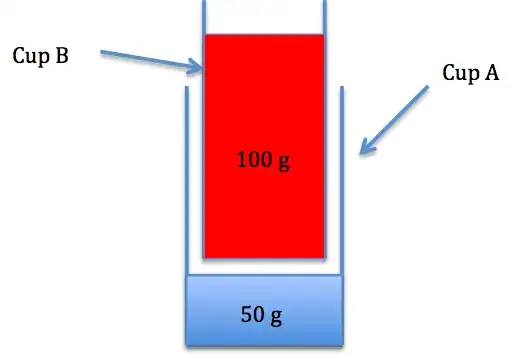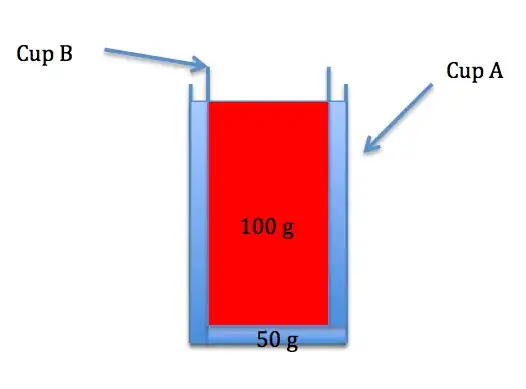How about this experiment:
Cup A is full of water to the rim. You place cup B filled with some water to float in cup A. Most of the water of cup A spills over the rim except for a tiny amount. However cup B finally floats in cup A. You pull the floating cup B out of cup A.
- How much water spilled from cup A?
- How much volume of water was spilled?
- Will cup B float again, if you put it back?
Bonus questions:
- By how much rises the water level, if you put a stone (smaller but as heavy as cup B) into cup A?
- Why doesn't the stone float?
- How much water do you need to fill into a cup C to make cup B float in it, if cup C equals cup A except for a higher rim?
- How much (more) volume of water would you need to fill into cup D to make cup B float in it, if cup D would be wider than cup A?
I guess the confusion arises from measuring water by its weight instead of its volume. The water spilled from cup A is the volume of water displaced by cup B. But you don't need to actually spill it. It's just important that the water level rises as much as if it was spilled.
And now to answer your question:
You are applying the term "displace" incorrectly, because you relate it to the water that is still there. But the meaning is that it is not there, e.g. the spilled water. However spilling water is only a way to visualize that something is not there.
In short:
Displacement does not mean "spilling", but raising the water level because a certain "volume is pushed aside".
BTW:
The last paragraph in the marked answer is kind of critical:
The tricky thing is: Cup B effectively displaced 100 g of water, even though there was only 50 g of water available to displace!
The last verb shouldn't be "displace" but "push aside", otherwise it's the same erroneous way of thinking.

